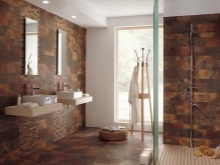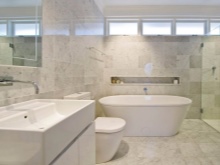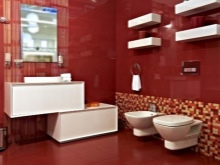Aligning the walls in the bathroom to be tiled
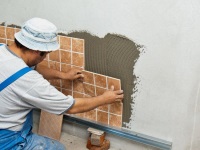
The best finishing material for the bathroom is ceramic tile, but for its installation requires perfectly even walls. Otherwise, the tile will be laid crooked, and will not last long because of the presence of voids. Therefore, before you start tiling the walls, it is necessary to deal with their alignment.
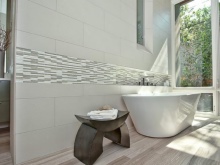
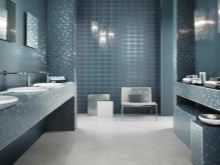
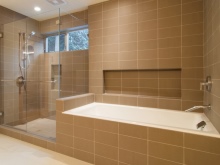
Assessing the need for wall leveling
The problem of curvature of the wall surface in the bathroom is especially relevant for old houses, where repairs have been repeatedly carried out and, as a consequence, layers of finishing have accumulated, forming irregularities. When planning a major repair, experts recommend completely removing the old layers of finishing materials to the base of the walls, and then proceed to the preparatory work. But it should be noted that in some cases there is no need for drastic measures, for example, if the irregularities are local and can be plain putty.

To determine whether a major preparation of the base under the cladding, it is necessary to assess the following parameters of the walls:
- the accuracy of corners;
- the conformity of vertical and horizontal lines;
- The presence of depressions and protrusions.
You can check by measuring tape, a level, a ruler, plumb line and a thin cord.
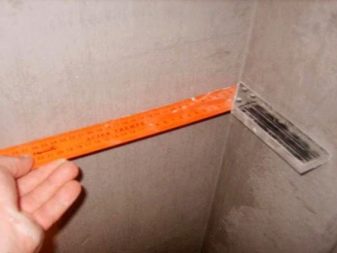
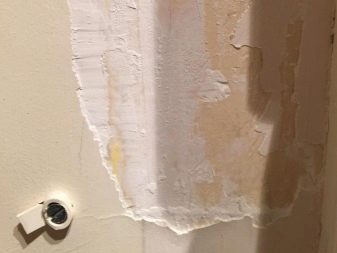
If the deviations of the planes exceed 3 mm, then leveling the walls will be necessary. This task can be performed in two ways - by plastering and cladding with sheet material, i.e. gypsum board or plastic. The first method is more labor-intensive, but its result is the highest quality and reliability. As for the second option, it will be the best choice for a large bathroom, or if the curvature of the walls is quite large.
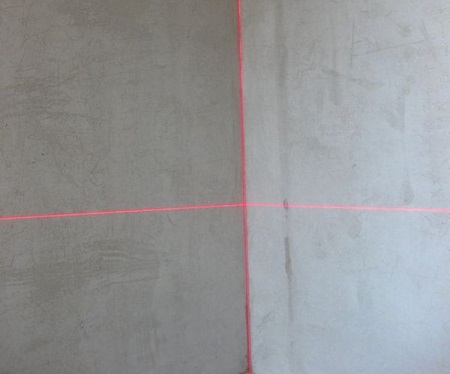
The traditional method - leveling with plaster
Plastering the walls under the tiles - the most common method of leveling surfaces in the bathroom. But it should be taken into account that if the unevenness exceeds 5 cm, this method will not be appropriate. Plastering is considered one of the dirtiest types of finishing work, so it is necessary to cover the plumbing with a construction film, as well as to work in protective clothing and a respirator.
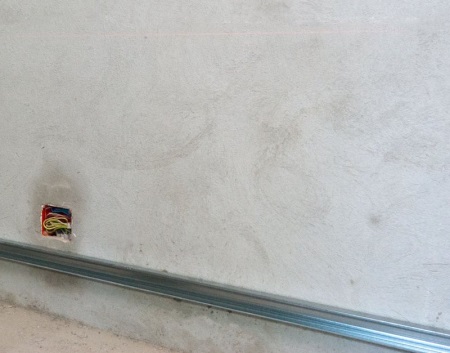
The first thing to do is make preparations, which include:
- Completely remove the old finish with a trowel. To make the work less dusty, spray the walls with water from a spray gun.
- Filling cracks with cement mortar. They must be preliminarily cleared and slightly widened with a trowel.
- Apply primer to the cleaned walls. For porous surfaces, you should use a mixture of deep penetration, and for dense - concrete-contact.
- Unstable, loose walls need to be reinforced. If the house is paneled, a grid of Rabica, which is attached with nails, is suitable, and for wooden surfaces it is better to use shingles.
- Placement of beacons by means of plumb strips, at a distance of no more than 150 cm. They will help to more carefully level the base under the tiles.
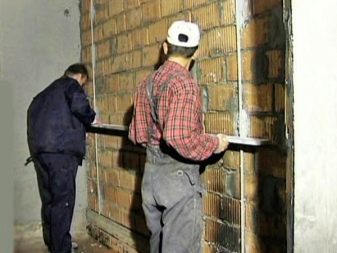
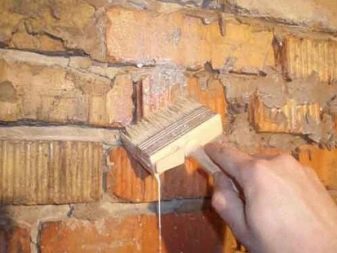
Once the preparatory work is completed, you can proceed to the preparation of the mortar and direct plastering. The mixture is prepared in accordance with the manufacturer's instructions, which are placed on the package. Then, using a trowel, it is gradually applied to the prepared wall in small sections, and smoothed on the screeds with a rule. Thus plastered all the walls in the bathroom.
In the course of the work it is necessary to gradually remove the screeds until the mortar has gelled, and fill the resulting cavities. After finishing the walls, you need to let them completely dry, and then apply a primer of deep penetration. Once the surface has dried, you can begin laying ceramic tiles.
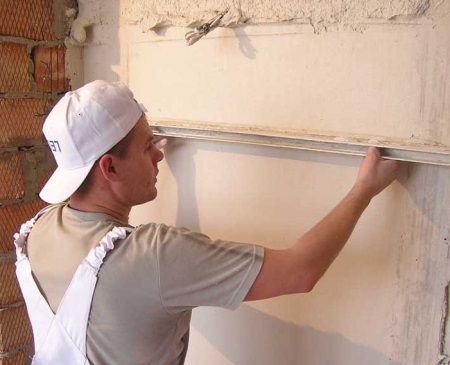
Alternative ways
Aligning the walls in the bathroom with drywall refers to an alternative method, which is also called "dry". Plasterboard allows you to create a perfectly smooth surface, which can later be used for laying ceramic tiles. The process of leveling the walls takes a minimum of time, and in addition, it is not complicated.
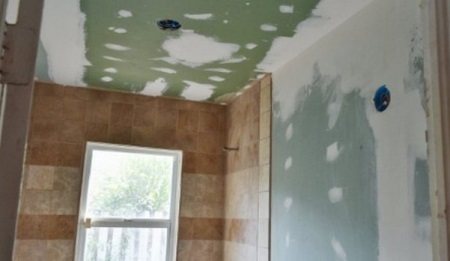
To level bathroom walls with moisture-resistant gypsum board, you need to do the following:
- Prepare the walls in the same way as before plastering - clean off old trim and apply a primer.
- Measure the walls and prepare drywall sheets. To cut the material, an ordinary kitchen knife will do.
- On the prepared sheets in the center and perimeter, special adhesive is applied in the form of small petals, observing a distance of about 30 cm. Then they are pressed against the wall. If small sheets of material are used, they should be placed in staggered order.
- After placing the sheets on the same wall, it is important to check the surfaces for irregularities with a level. This should be done immediately, before the glue dries. After eliminating the flaws, you can move on to pasting the next wall.
- Finally, putty the seams between the sheets of drywall, and treat all the walls with primer.
In small bathrooms, it is not recommended to level the walls with drywall, as their area will become even smaller.
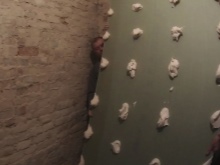
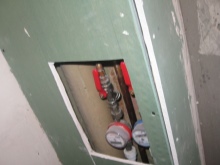
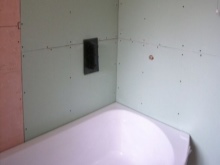
Tips
The choice of how to level the walls will depend on the size of the bathroom, the type of base surface and the degree of irregularities.
1. Panel House. As a rule, in the bathrooms of panel houses rarely have difficulties with significant unevenness of the walls, the exception may be the curvature of the block itself. In this case, it is best to resort to plastering. Installation of gypsum board sheets will be appropriate in the presence of significant surface defects, but if the bathroom has a fairly large area.
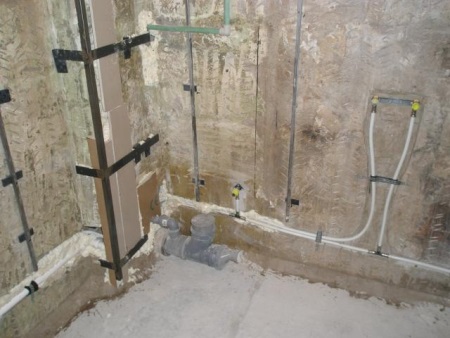
2. Monolithic house. In such buildings, one wall in the bathrooms is concrete, and the rest are made of foam concrete or gypsum gypsum blocks. Significant curvature is excluded, so it is best to level the surfaces by plastering, but during the work it will be necessary to apply several layers of primer.
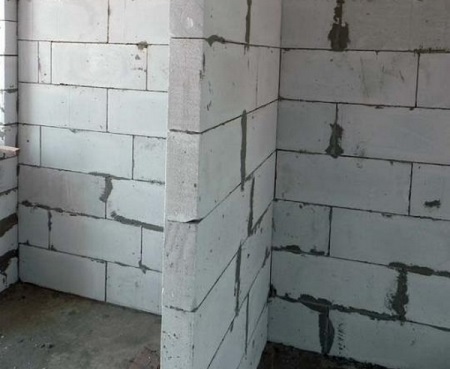
3. Brick house. Such buildings are the most problematic, especially if they were erected several decades ago. Alignment of brick walls can be performed in any convenient way - by plastering or installing sheet material. The latter option will be more acceptable, since the curvature of surfaces often reaches 5 cm, and their plastering will take a lot of time and building materials.
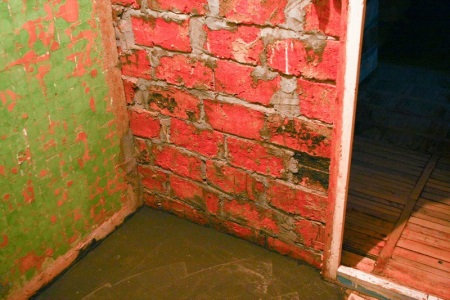
The procedure of alignment of walls in the bathroom under the ceramic tile is an important process, so it should be carried out carefully, and do not save on materials. After all, the quality of the work done will depend on the durability of tiling and the aesthetics of the entire room.
